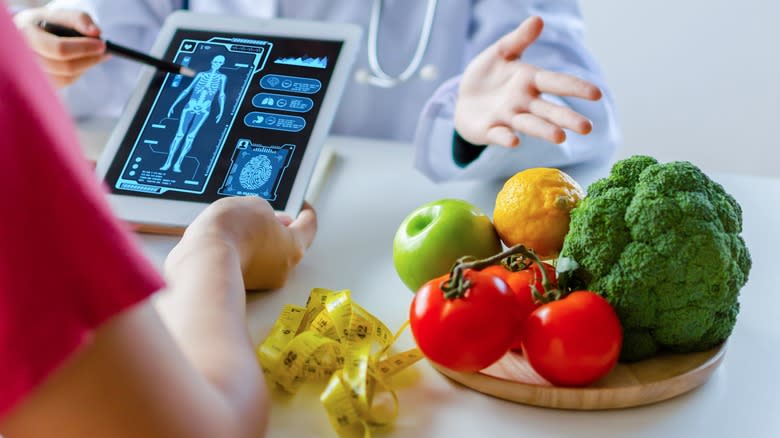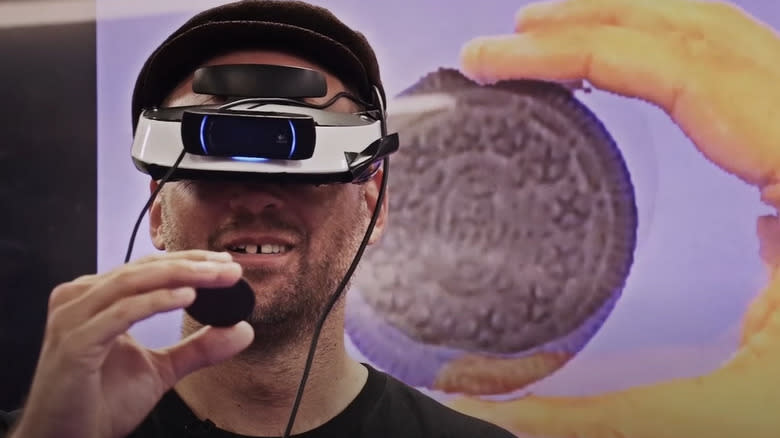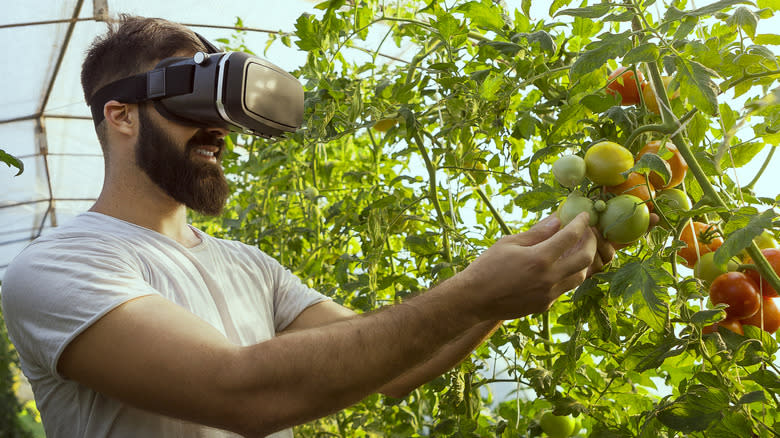The Science Behind How Virtual Food Plays With Our Senses

In the age of artificial intelligence, virtual food is inevitable. Just look at the virtual restaurants that were popularized after eateries were forced to close during the pandemic. Now, technology has advanced to such heights that it is now possible to hack the human brain to alter how we taste food, a feat made even more impressive considering how it is innovating the food industry.
In October 2015, Japanese scientists led the way for technological dietary advancements, with Tokyo University's Cyber Interspace Lab developing brain-changing equipment capable of recalibrating the eating experience by, essentially, hacking the senses. In December 2022, scientists added to this techno-diet phenomenon by discovering how ambient lighting and taste stimuli altered the perception of food in virtual reality. Both studies noted how similarly the human brain functions to the modern computer: Change the input information, and an entirely new outcome is produced.
How does this affect how we eat food? Virtual food can be utilized by astronauts to improve their dining experience in orbit. Smaller amounts of food can fill the stomach by simply convincing the brain that it consumed more than it really did. The possibilities are endless. Yet how exactly does virtual food satisfy our appetites? Could it become a popular staple of the modern diet?
Read more: What These Imitation Foods Are Actually Made Of
The Meta Cookie Experiment

In Season 1, Episode 1 of Vice's 2015 "Food Hacking" series, host Simon Klose journeyed to Japan to meet with Takuji Narumi, assistant professor of the Cyber Interface Lab at Tokyo University. Narumi was using virtual reality to alter the taste of a cookie in what was dubbed the meta cookie experiment. By using enhanced goggles that changed how the cookie looked and smelled — with several tubes emanating different flavored scents such as lemon and chocolate — Narumi and his team of researchers were able to change how Klose tasted the cookie. The virtual reality goggles would, for example, show a chocolate cookie instead of the plain version eaten by Krose in the goggle's eyepieces. Combined with the aroma of chocolate from the tubes, Krose's brain accepted this new information by also changing the taste to chocolate rather than plain.
That's not all. Using a technique the researchers call "augmented satiety," Narumi's technology additionally altered the sensation of how much food was consumed. By projecting the image of a larger cookie in the goggles, Klose was convinced that he'd eaten more food than he actually had, spelling good news for those searching for new ways to diet. In addition to the goggles, Narumi's team used projectors to enhance the appearance of dinner plates, allowing the subjects to comfortably consume less food without adjusting their portions.
More Evidence – And Experimental Virtual Food Games

Further studies in 2022 increased scientists' understanding of the symbiotic effect between environment and taste perception. According to a study in the International Journal of Gastronomy and Food Science, "Taste perception is influenced by sensory information not only about the food itself but also about the external environment where the food is tasted." Altering the ambiance of our surroundings — say, a gently lit, airy restaurant as opposed to the harsher fluorescents of a typical office setting — actually changes our perception of how the food tastes. Not only that but changing the lighting in virtual reality settings can decrease sweetness in certain flavors. We can also alter the shape of food to resemble something else to trick our brains into believing we're having an entirely different dining experience than we really are.
Virtual food is still a marvel of the future inaccessible in most homes. Yet it is trickling into society in the form of virtual food games, such as "Nour: Play With Your Food," an experimental video game that takes users into virtual reality to, quite literally, play with their food. Although players don't get to eat their virtual treats, the game exemplifies the merger between food and technology that continues to grow as the technological age advances.
Read the original article on Daily Meal.

